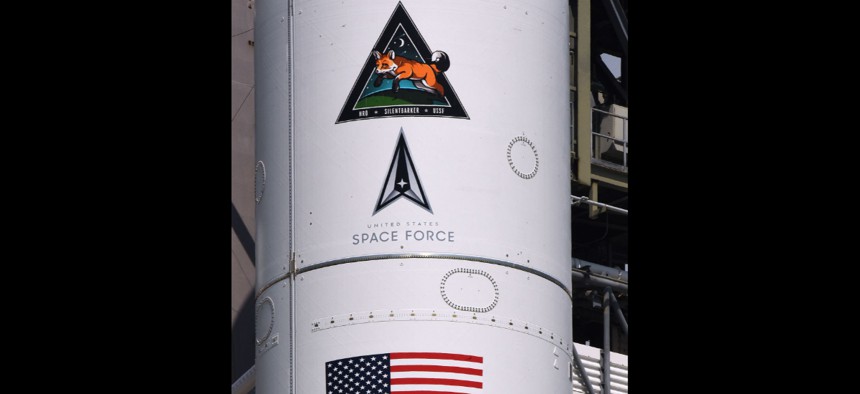How different Space Force is from the branch it came from

The mission emblems on a United Launch Alliance Atlas V rocket that lifted off in September 2023 from Cape Canaveral. Photo by Paul Hennessy / SOPA Images / LightRocket via Getty Images
The Air Force once handled substantially all of the military's space portfolio that is now part of Space Force. One former Air Force space officer told our Power Breakfast audience that understanding the shift requires looking at technology and threats through a different lens.
Part of Space Force's unique nature and characteristics stems from the fact that this sixth service branch of the U.S. military is only four years old.
Contrast that with the respective ages of the U.S. government's other major space buyers, including the 76-year-old Air Force that Space Force was carved out of.
NASA has been around for 65 years, the National Reconnaissance Office for 62 years, National Oceanic and Atmospheric Administration for 53 years and National Geospatial-Intelligence Agency for 28 years.
During our Jan. 19 Power Breakfast on doing business with Space Force, Stellar Solutions CEO Janet Grondin highlighted several differences between the military's newest service branch and many of those other much older agencies.
Take for instance the Air Force, where Grondin served for 26 years as an officer and directly supported major space programs until she retired from that service branch in 2015. In fact, Grondin quipped that she "would have been in the Space Force" if that idea became a reality during her military career.
Grondin characterized the Air Force as a technology-focused service that is also "very disciplined," particularly on a flight line that has a lot of moving parts and happenings to be aware of at once.
"You have to be thinkers, you have to think on your feet, you have to be able to make things happen," said Grondin, who now leads a company focused on space systems engineering and integration. "But that structure actually doesn't help in some ways in space, the discipline that you need in order to be successful, the technology focus that's all important in space."
It is impossible to find anyone working in the space ecosystem who will tell you that the threat environment is static and unchanging. The complete opposite of that is true.
Grondin characterized the space domain as essentially one where humans are robot operators of satellites. All domains and service branches have the same passion for understanding technology and mission details, but the threat briefs for space may change significantly by the day.
That requires a quick adaptation and switch in mindset, Grondin said. She also described Space Force as making basic investments in training personnel and creating a culture with more agile processes.
"At some point, we're going to be very confident in our ability to manage the domain around the earth, but we're going to expand beyond that," Grondin said. "The agile mindset is going to be (just as) important as the domain and the threats continue to expand and move into different, different areas of of space."


